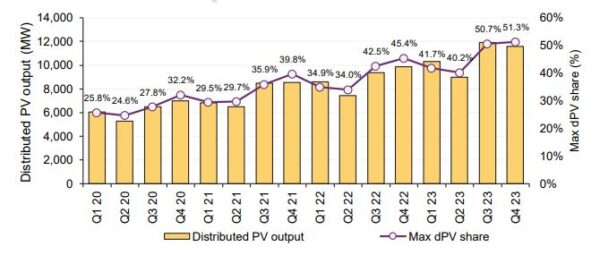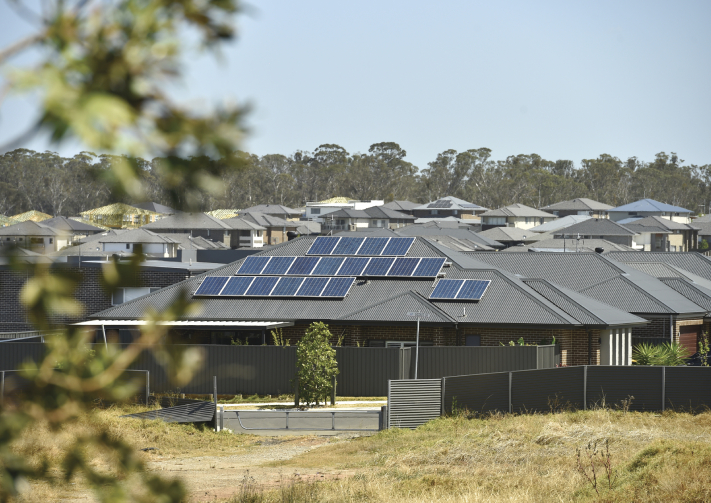The Australian Energy Market Operator’s (AEMO) latest report shows that new records are rapidly being set for the amount of renewable energy, including grid-scale and rooftop solar, being fed into the National Electricity Market (NEM), reducing the reliance on traditional coal-fired generation.
AEMO Chief Executive Officer Daniel Westerman said there were moments in time in the final three months of 2023 that show just how fast Australia’s energy transition is happening.
“Early in the afternoon of Dec. 31 rooftop solar met 101% of South Australia’s total electricity demand,” he said. “While on the afternoon of Oct. 24 rooftop solar and grid-scale renewables provided 72% of all electricity across the east coast. These events are snapshots of the transition that’s happening, and they are becoming more frequent. We are regularly seeing records set for the higher contribution of renewables, and lower levels of energy drawn from the grid because of rooftop solar.”
The latest Quarterly Energy Dynamics report shows that average distributed PV output reached an all-time high in Q4 2023 of 3,433 MW, 505 MW or 17% higher than the same period in 2022 and a new record for any quarter.
Popular content
The market operator said distributed PV output reached record highs in all regions, with October yielding a particularly notable 44% year-on-year increase in monthly average for the NEM. By contrast, the NEM-wide November average rose only 7% year on year, with New South Wales and Queensland experiencing decreases on 2022 levels.
pv magazine print edition
The February edition of pv magazine, out next week, considers the ramifications of Dubai’s COP28 climate change summit for solar and asks where the workers will come from to staff the energy transition. A busy edition also ranges as far afield as Bulgaria, the South Caucasus, Cyprus, South Africa, Poland, and Navajo Nation in search of solar updates.
In December, this position reversed, with monthly averages falling in Victoria and South Australia within a 7% NEM-wide increase. At 17% for the fourth quarter as a whole, year-on-year growth of distributed PV output was lower than in recent quarters which had recorded annual growth rates of about 30%.
By region, New South Wales experienced a 20% increase in distributed PV output, reaching a quarterly average of 1,155 MW, while Queensland saw an 18% rise to average 1,063 MW.

To continue reading, please visit our pv magazine Australia website.
This content is protected by copyright and may not be reused. If you want to cooperate with us and would like to reuse some of our content, please contact: editors@pv-magazine.com.



By submitting this form you agree to pv magazine using your data for the purposes of publishing your comment.
Your personal data will only be disclosed or otherwise transmitted to third parties for the purposes of spam filtering or if this is necessary for technical maintenance of the website. Any other transfer to third parties will not take place unless this is justified on the basis of applicable data protection regulations or if pv magazine is legally obliged to do so.
You may revoke this consent at any time with effect for the future, in which case your personal data will be deleted immediately. Otherwise, your data will be deleted if pv magazine has processed your request or the purpose of data storage is fulfilled.
Further information on data privacy can be found in our Data Protection Policy.